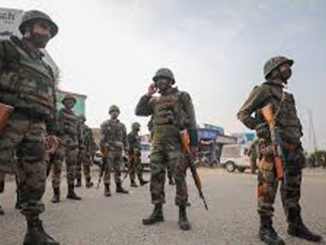Chandigarh (TIP)-Adrop in voter turnout of more than five per cent in nearly all 117 assembly constituencies in Punjab has given rise to various speculations.Three leading Punjab-based psephologists were asked some questions like – why the political parties failed to mobilise the voters despite many favourable conditions like deferred poll date, eased covid restrictions, abundance of issues like farmer agitation, sacrilege, failures of Congress government besides the attractive freebies.
Also, could it be that a multi-cornered contest confused the voters? Will the unfulfilled poll promises cost dear to Congress? Why did the freebie bait fail to lure the voters? Whether the poll results will lead to a fractured mandate?
Here’s what the psephologists said:
On decline in voter turnout
Voter turnout is witnessing a downward trend in Punjab. The poll percentage which was 78.2 percent in 2012 came down to 76.8 per cent in 2017 and further dropped to 72 per cent in 2022 .
Half of the South Malwa seats (14) which proved an AAP bastion in 2017 witnessed over five percent drop in voter turnout.Hub of dalit politics Doaba region also witnessed a six per cent drop in voter turnout.
Experts like professor Pramod Kumar, who heads the Institute for Development and Communication (IDC), says the decline simply means AAP’s undercurrent was limited.
“We heard there was an AAP undercurrent as they sought votes for a change. Why did AAP fail to mobilise voters in its bastion (South Malwa)? Our data also shows that AAP’s vote share declined in these constituencies” says Prof Pramod Kumar, adding that AAP may annex more seats to its kitty but the so-called wave was missing in the state.
Another Psephologist, Professor Gurmeet Singh of Panjab University, also doubts AAP’s undercurrent as the bumper voting did not take place.
“Decline in poll percentage is more worrisome for the Aam Aadmi Party than its rivals.AAP emerged stronger in the Malwa belt but failed to mobilise the voters.This means that the wave or undercurrent was limited to some rural pockets” says Prof Gurmeet Singh.
According to professor Pramod Kumar, there was crowding of the electoral space as the contests were five cornered. There were choices before the voters but they were confused. More than five per cent of voters, as compared to 2017, confined themselves to their homes.
Psephologists say Congress’s overall vote share is also likely to be affected by the anti-incumbency it faced this time. Professor Pramod Kumar estimates the vote share loss at around five per cent.
Source: India Today





Be the first to comment